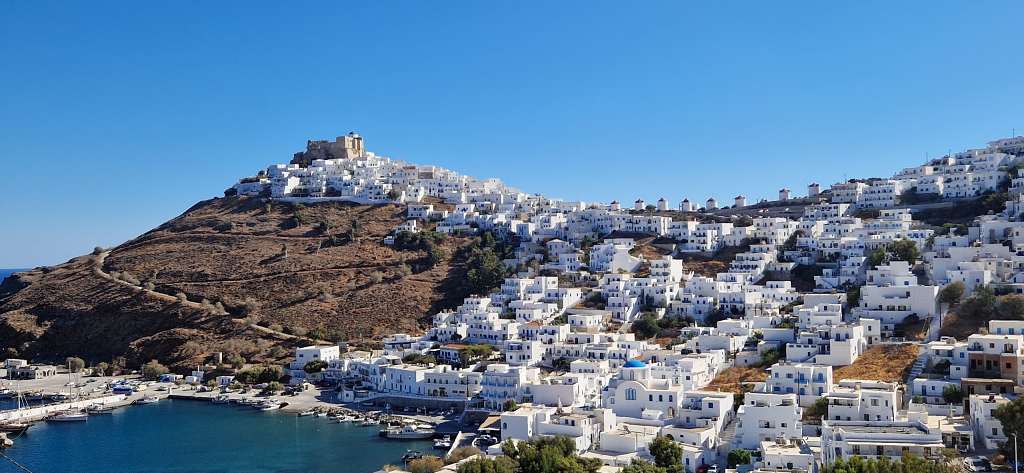Astypalea is a gorgeous island, part of the island group cluster of the Dodecanese in Greece. However, it’s only just, as it sits right on the edge where the Dodecanese meets the Cyclades, which adds to Astypalea’s unique style!
It is breathtakingly stunning in its wild nature and irresistible beaches, but also wonderful in heritage, good food, and welcoming people. People have managed to maintain Astypalea’s iconic authenticity and folklore without rejecting modernity, partly thanks to keeping their island from being too well known among the tourist circles.
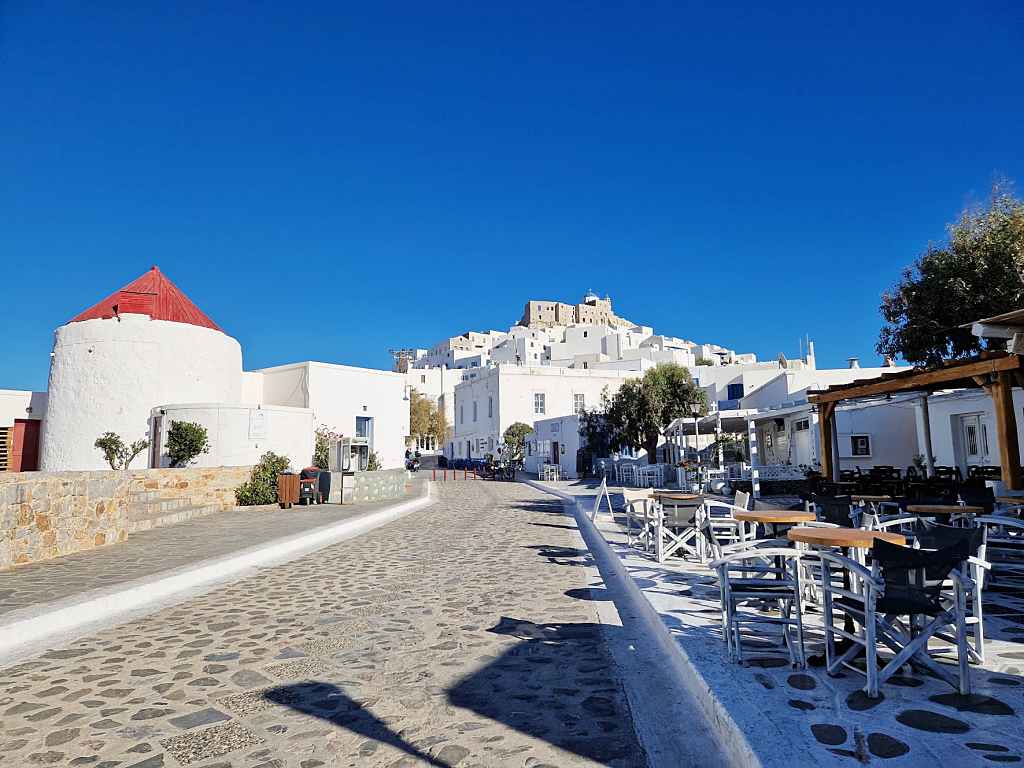
There’s a lot to discover in this treasure trove of an island, and this guide will help you make the most of an unforgettable, wonderful experience on one of the most beautiful islands in the Aegean!
Disclaimer: This post contains affiliate links. This means I will receive a small commission if you click on certain links and subsequently purchase a product.
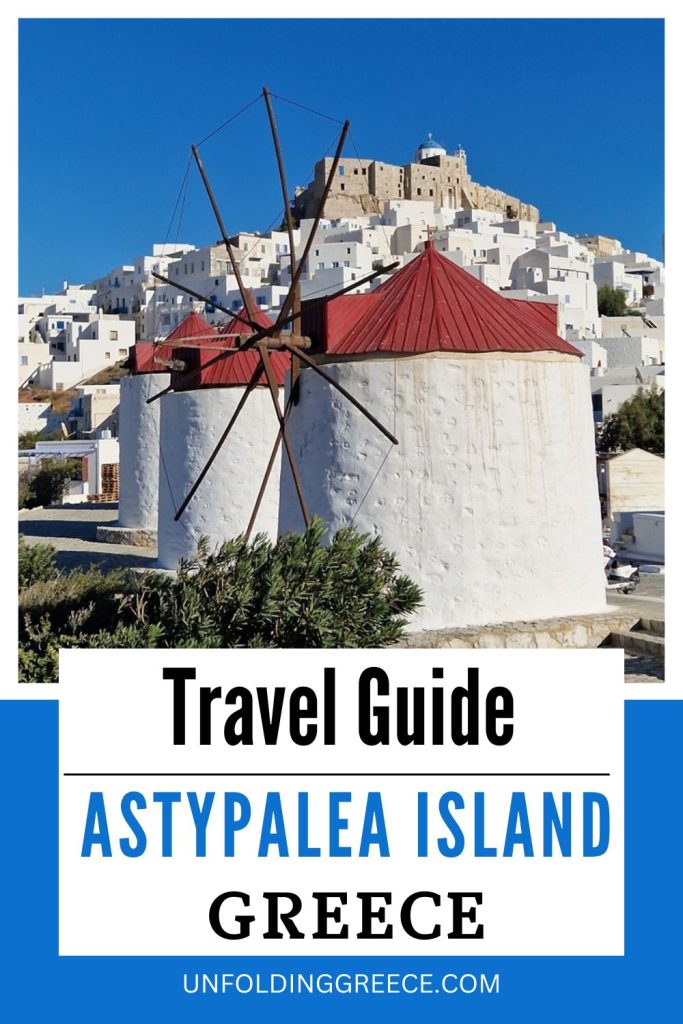
Where is Astypalea?
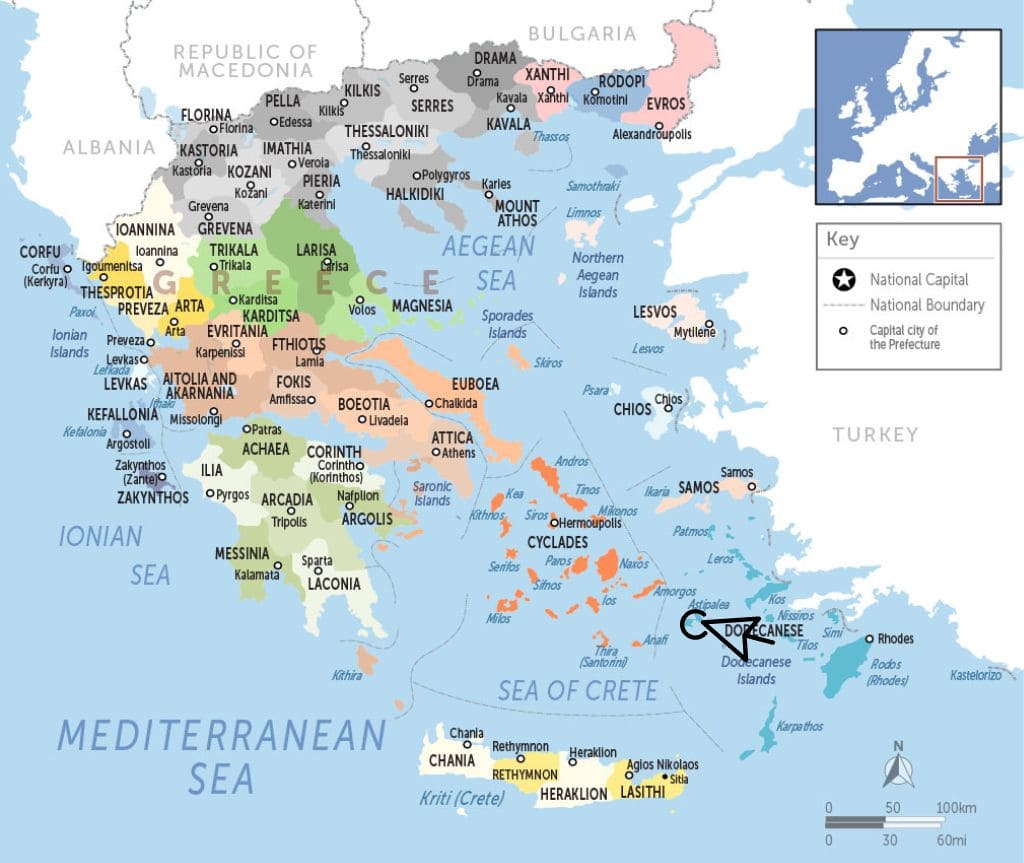
As already mentioned, Astypalea is at the westernmost edge of the Dodecanese cluster, bringing it very close to the Cyclades.
The island is butterfly-shaped and relatively small. The two wide parts of the island forming “the wings” of the butterfly are connected by a more narrow strip of land in the middle for the “body” of the butterfly. One of them, called Exo Nisi, is where there are inhabitants. The other one is called Mesa Nisi, and it is uninhabited, and protected by Natura 2000.
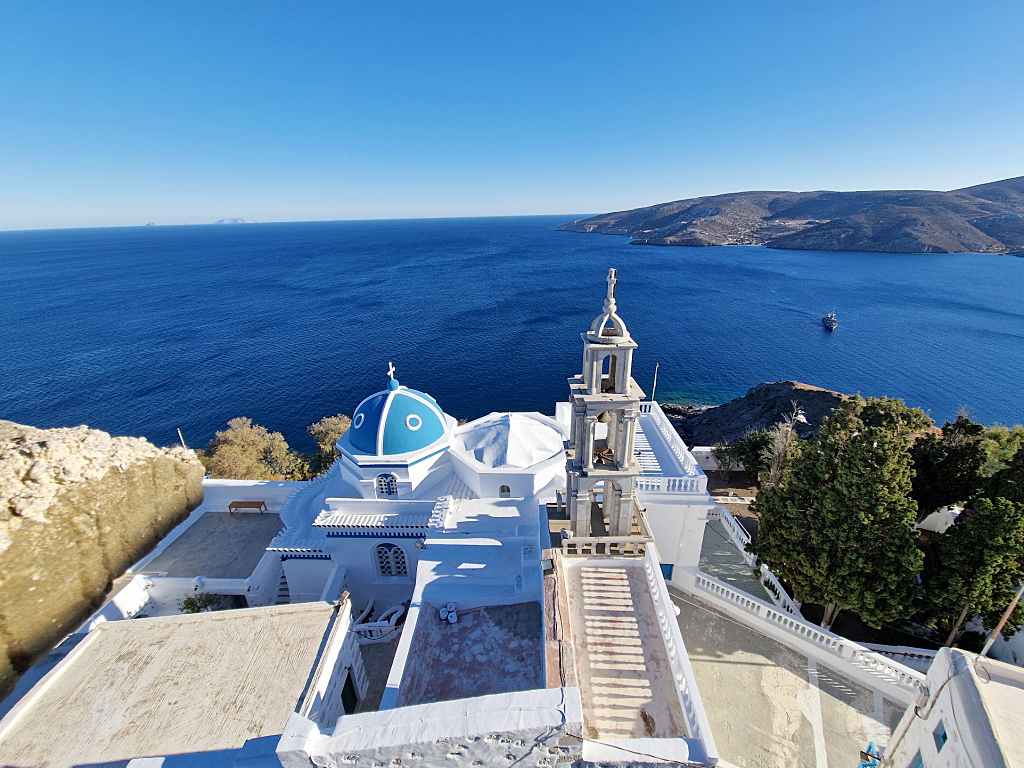
Because it is very close to the Cyclades, it shares one of the most infamous Cycladic characteristics regarding the weather: the meltemi. The meltemi is a northern wind that appears in the Aegean during the summer months, mainly during August.
The wind is strong during the day and usually calms down during the evening and night (though not always). Thanks to the meltemi, even the very high temperatures of the Greek heat waves (reaching even 40 degrees Celsius) feel cooler. The downside, though, is that you may not be able to enjoy some of the beaches most affected by the wind when the meltemi is blowing.
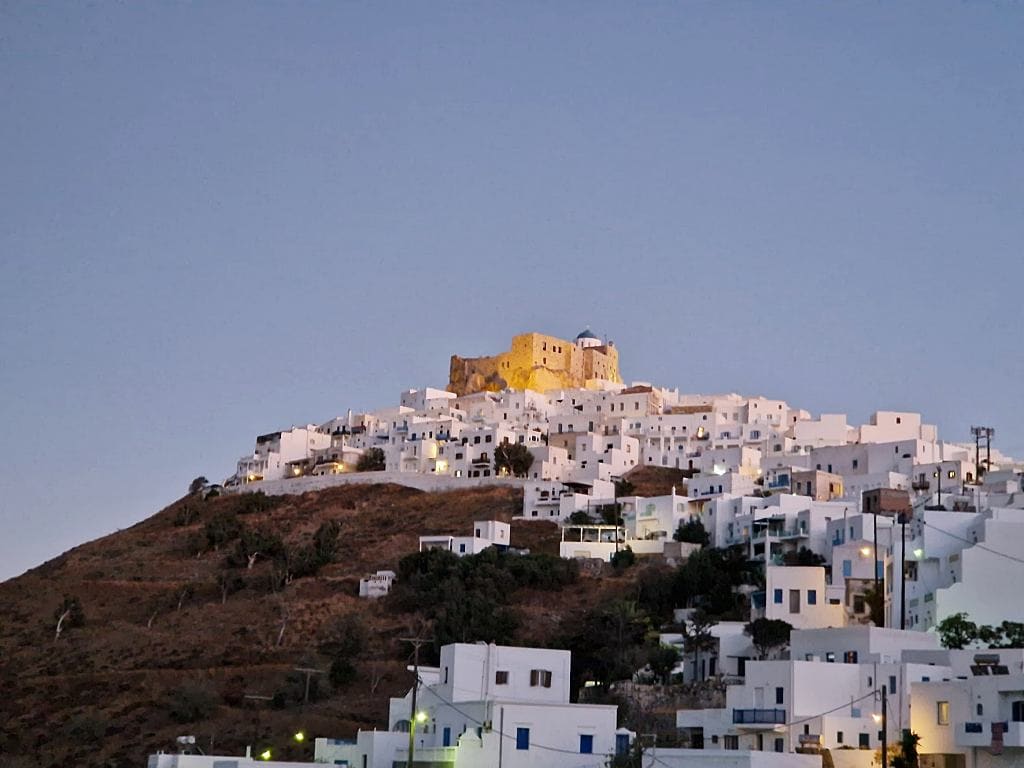
The best time to visit Astypalea is during the summer, from roughly mid-May to late September, in Greece. If you want to avoid the brunt of the Meltemi, avoid going during August. Usually, July and September are the ideal, Meltemi-free months. September is also a lot quieter, as a rule, if you’re looking for absolute authenticity and relaxation.
How to get to Astypalea
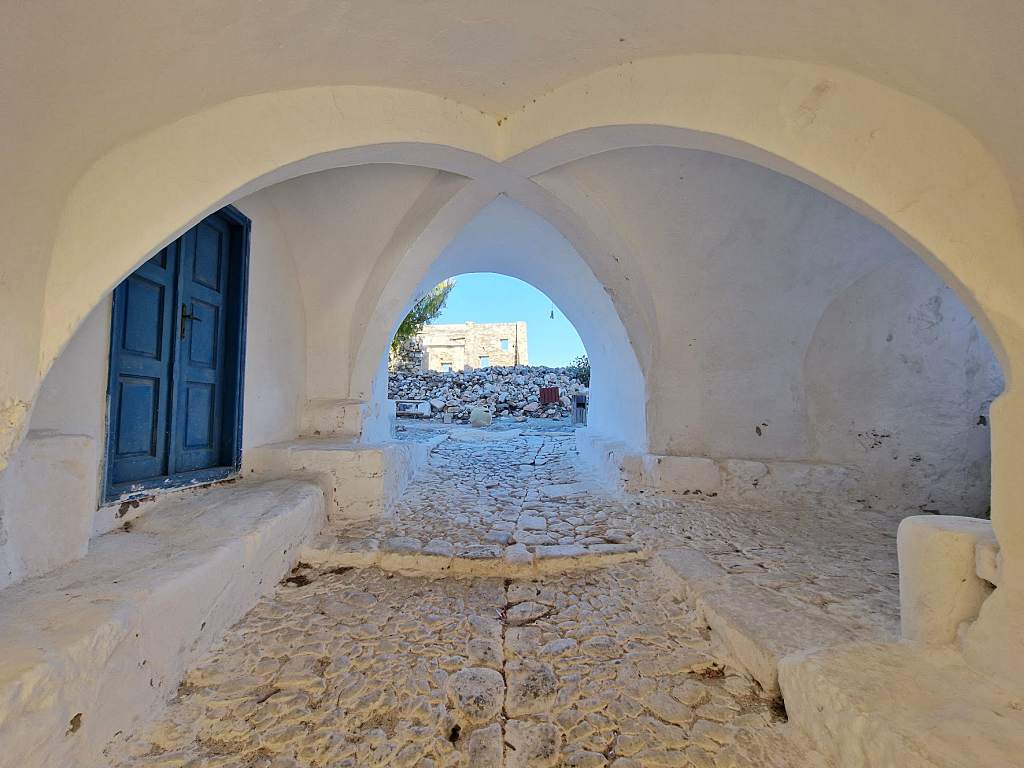
There are two ways you can get to Astypalea: by plane or by boat.
If you opt to go by plane, you must go to Athens first. Astypalea’s airport works only during the summer months and only receives domestic flights. The flight from Athens is under an hour, and Astypalea’s airport is roughly 10 km from Chora.
If you opt to go by ferry, the trip lasts around 9 hours if you leave from the port of Piraeus, Athens. That’s why it’s best to book a cabin for a more comfortable experience. There are also ferry connections to Astypalea from other islands, such as Paros and Naxos in the Cyclades or Rhodes in the Dodecanese. You can add Astypalea to your island hopping fairly easily if you’re not looking to focus on just one Greek island.
Click here for the ferry schedule and to book your tickets directly.
or enter your destination below:
Where to stay in Astypalea
Ihthioessa Boutique Hotel: located in the main town of Astypalaia, with easy access to many facilities, restaurants, coffee shops, and many more. Also, the hotel’s restaurant is trendy for its fish dishes. Click here for more information and to check the latest prices.
Lefkanthemo: This hotel is located in the island’s main town and offers panoramic views of the Aegean sea, the town, and the castle. Guests can enjoy the views from their private balconies. Click here for more information and to check the latest prices.
A brief history of Astypalea
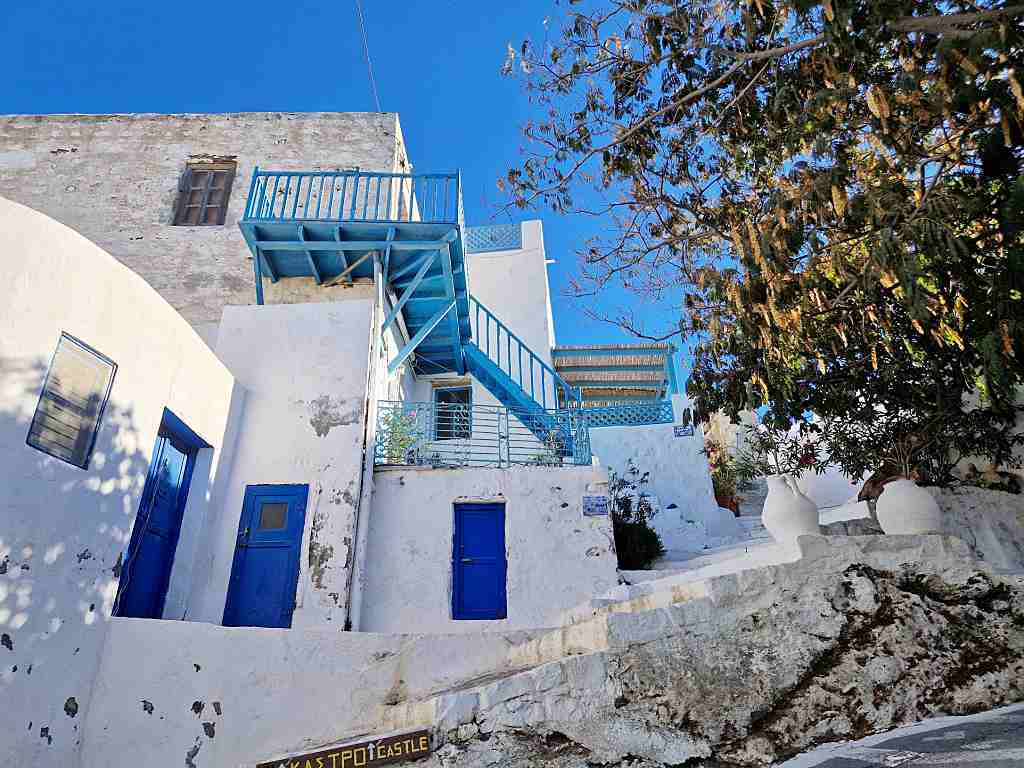
According to ancient Greek myth, Astypalea was a princess who was one of Poseidon’s most intimate lovers. Together they had many children, and she gave her name to the island she loved the most.
Historically, there is evidence that Astypalea has been inhabited since at least 2000 BC when the Caraes, a people from the coast of Asia Minor, first settled there. After that, the Minoans made the island part of their seafaring empire. Astypalea was a rich hub of activity in the Classical times as part of the Athenian league.
Because of that prosperity, there were many temples built on the island. The land was fertile enough too, and Astypalea was called “the table of the gods” thanks to the flowers and fruit trees everywhere.
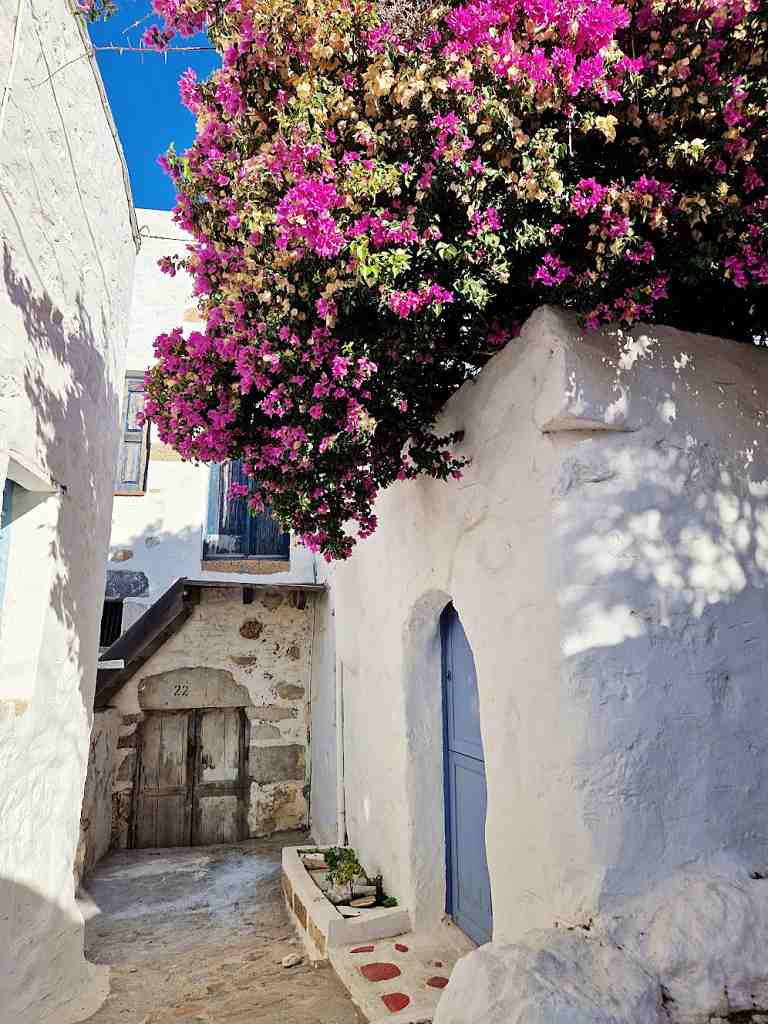
During Hellenistic and Roman times, Astypalea became an important port and a vacationing resort for the aristocrats of the era. During Byzantine times, piracy became a blight for the island forcing people to move higher up and build a castle to protect themselves.
Eventually, during the Venetian occupation in the 1200s, the Italians built various fortifications to protect the island from pirates and other enemies. They remained in control for the next three centuries until the Ottomans took over in the 1500s.
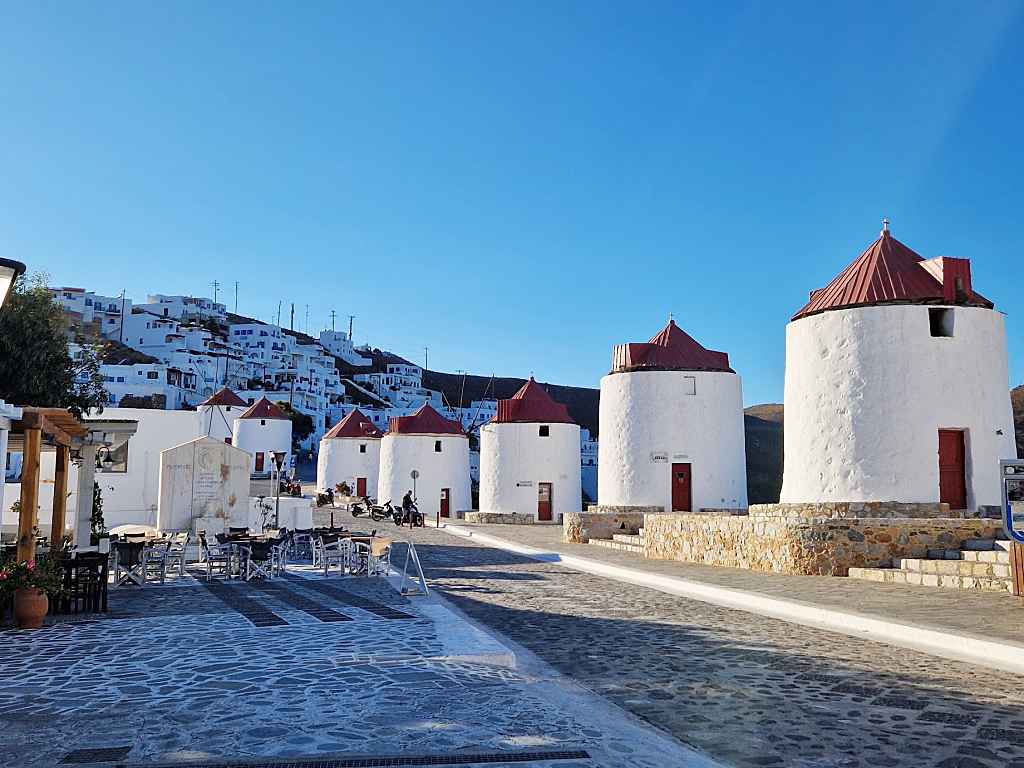
During the Greek War of Independence in 1821, Astypalea contributed to its strategic position but remained under Turkish rule after the modern Greek state was founded. Only after WWII that Astypalea was relinquished to Greece by the Italians and Germans in 1948.
Things to do in Astypalea
Astypalea is fairly small but there are many things to experience and explore. Here is a short list of what you absolutely shouldn’t miss on your holidays there:
Explore Chora
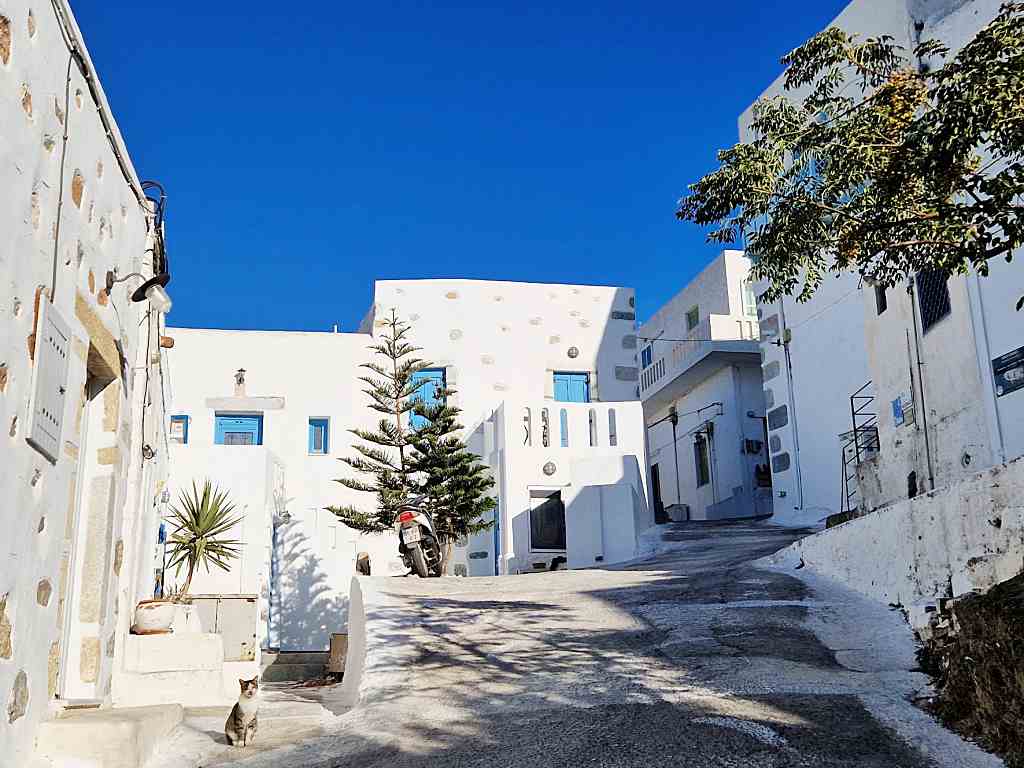
The main town of Astypalea, its Chora, is a true gem of the Aegean. Combining elements from the Cyclades and the Dodecanese in architectural style and arrangement, its Chora is a glistening sprinkle of whitewashed houses on the slopes of a hill tumbling down towards the port.
Explore its winding paved paths with the white designs, look at window and door decorations that make houses and churches look like cakes, and discover different views and vistas of the entire bay and the Aegean as you slowly go upwards. Make a stop at its traditional cafés and enjoy your local coffee with a spoon sweet before moving on to Chora’s various sights.
Visit the Archaeological Museum
This is Astypalea’s only museum, and you will find it in Chora. And though it is relatively small, it contains a treasure trove of important artifacts. They were all excavated at various points and locations on the island and date as far back as the prehistoric era to medieval times. Browse through the various collections of coins, pots, jewelry, bronze and metalwork, tools, and more for a solid impression of the rich history of the island.
Visit the Venetian castle.
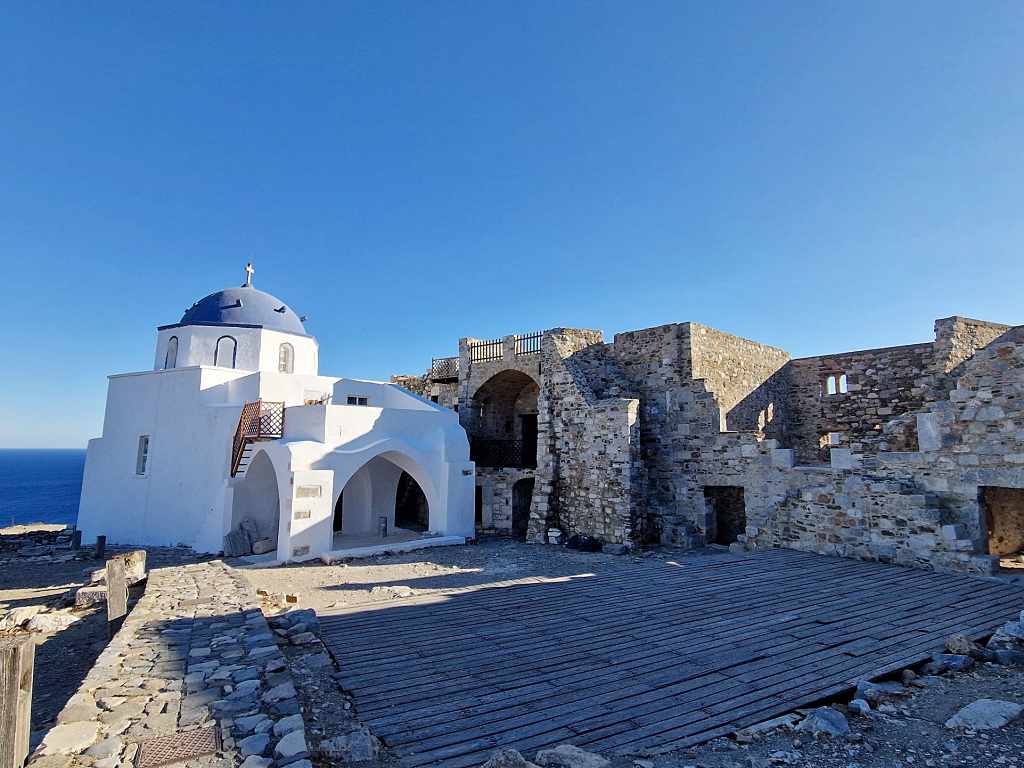
Like a crown, the Venetian castle sits on top of the hill protectively over Astypalea’s Chora. It was built in the 1200s by John Querini, who had taken over the rule and command of Astypalea during the Venetian occupation. The Querini family ruled in Astypalea for 300 years, and each successor renovated or added something to the castle, making it more opulent and efficient against piracy and enemy attacks.
Explore the castle walls and discover the various name plaques that the Querini patriarchs installed in the castle, with inscriptions dating as far back as the 1200s. Most are eroded, but a few, like one from 1413, are still clear and readable. The castle itself offers some of the best views of the entire island and the Aegean.
Take a look at the windmills.
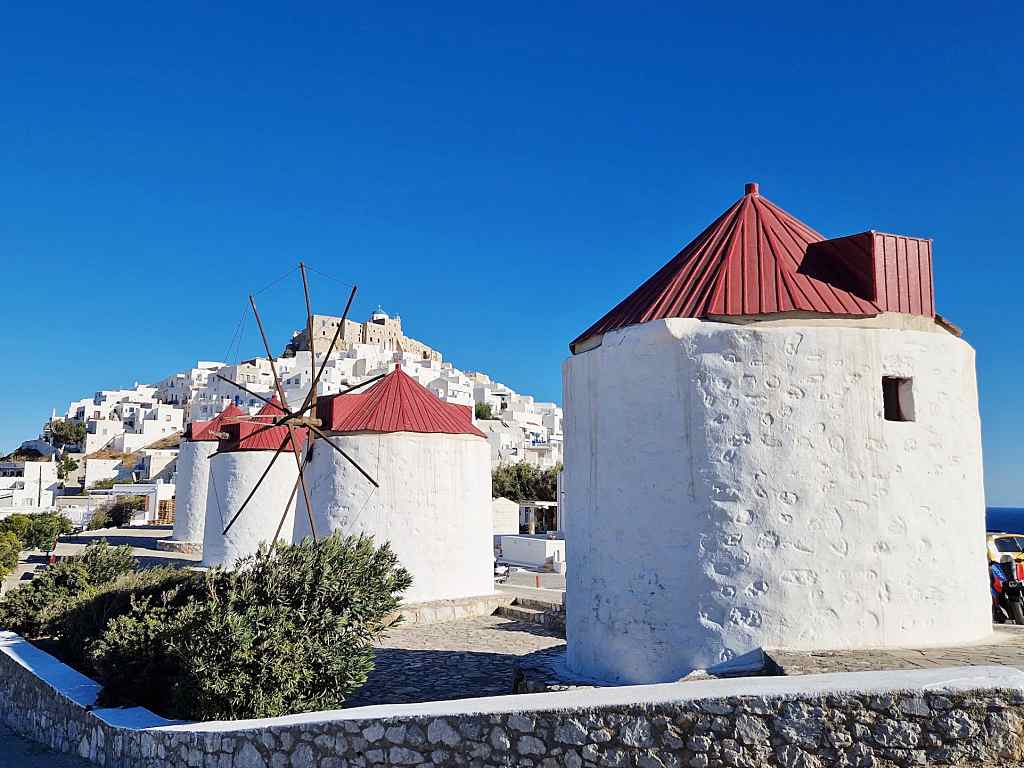
On your way toward the castle, you will find the iconic windmills of Astypalea. They are eight of them in a row, with bright white circular bodies and red roofs. They were built in the 17th and 18th centuries, and you can enjoy gorgeous views. If you want to do some romancing, consider visiting them at sundown or taking some time to drink coffee at the nearby café while you admire them.
Visit the churches
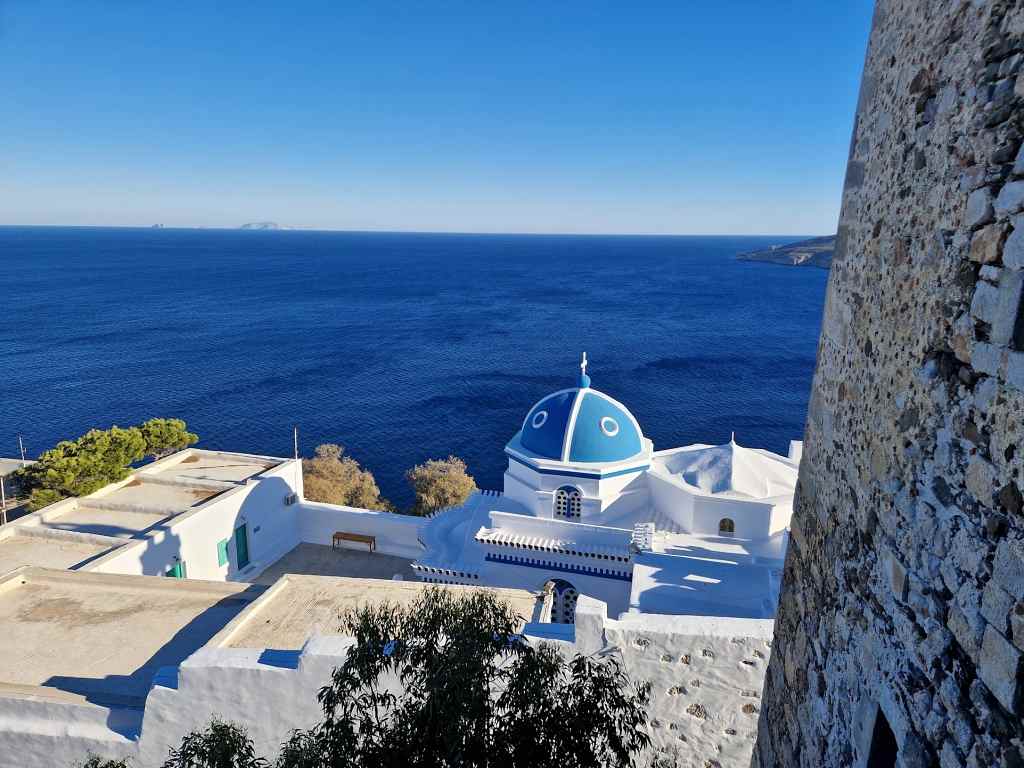
Panagia Portaitissa: Our Lady of Gates, as the name means, is a gorgeous church in Chora. It’s considered one of the most beautiful churches in the Dodecanese, so make sure you pay a visit! It’s white on its exterior, with lovely touches of blue on its dome and various outer decorations that give it a unique, beautiful, and iconic style. It was built in the 18th century. Near the church, there is a small collection of old important icons comprising the tiny Ecclesiastical Museum.
Panagia Poulariani: This is a small chapel you can reach on foot via a path that veers away from the road to Vathi village, or you can do so by boat. The chapel is tiny and humble, built by a rock formation that looks like the Virgin Mary holding an infant Jesus. Legend has it that the chapel protects sailors, and in times of great tempest, a light mysteriously comes on one of its windows, helping seamen find their way out of the storm.
Visit the old harbor Pera Gialos.
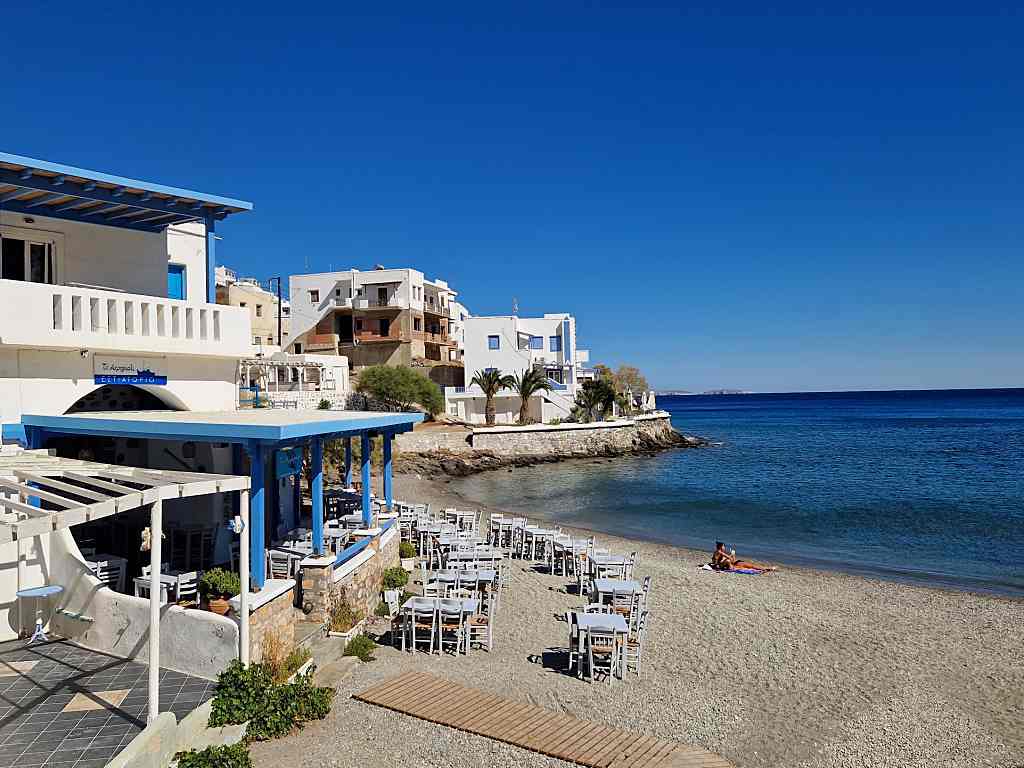
Pera Gialos means “the seaside over there,” and that’s where you will find it! Just outside of Astypalea, you will get to its old harbor. It used to be Astypalea’s only harbor but currently only serves boats taking tourists to various beaches- something you can do as well!
Around Pera Gialos, you will find many tourist services and venues, including rooms and small hotels, restaurants, cafés, and more. There is also a gorgeous, long strip of sandy beach that is popular with locals and tourists alike. Have a visit and use Pera Gialos as your starting point for more exploration!
Visit Drakos cave at Vathi.
The Cave of the Dragon, which means the name ‘Drakos,’ is located in Vathi village. You can get there by car or by boat. Enjoy Drakos Cave’s impressive stalagmites and stalactites that have different colors. Hear about the history of the cave as a pirate hideout and look at the play of light upon the cave’s interior. Visiting Drakos cave is a great little extra for when you opt to visit the beach at Vathi.
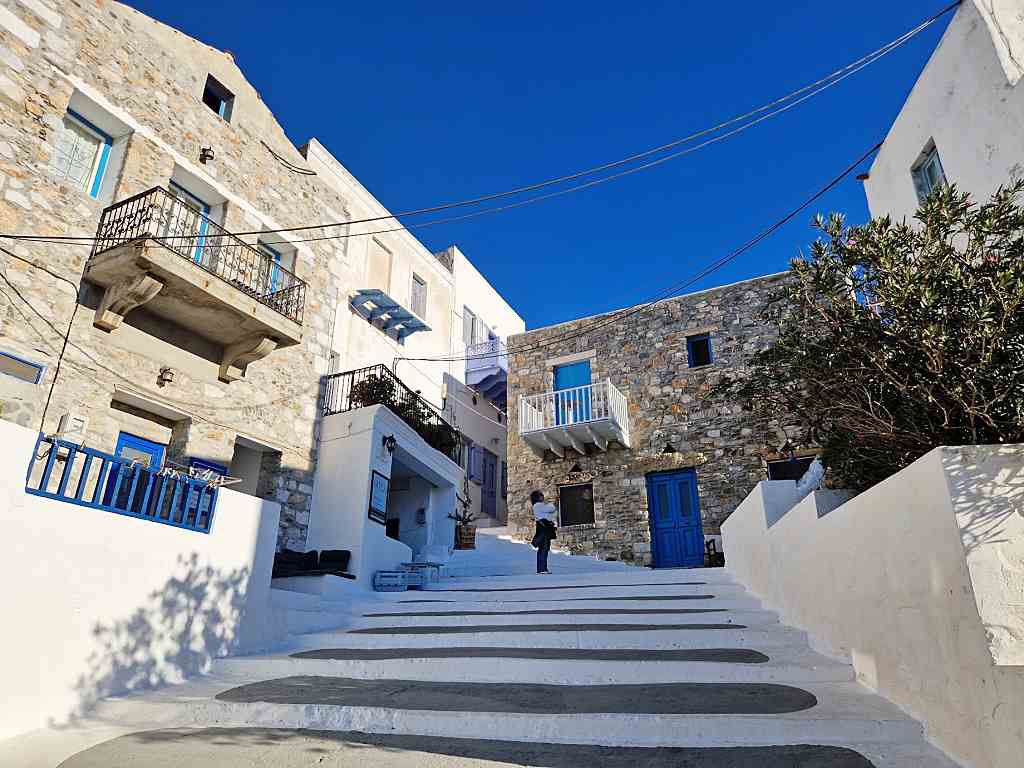
Visit Maltezana village
Maltezana village, also called Analipsi village, is roughly 9 km away from Chora, and it’s a lovely fisherman’s settlement with a bay protected from the elements. The village takes its name from the Maltese pirates that would take refuge in its bay and from the church of Ascension (Analipsi) there.
The church is the oldest in the village, so if you can, pay a visit. The village is picturesque and calm, perfect for sightseeing and relaxation. There is also a gorgeous sandy beach lined with trees that cast much-needed shade as you lounge under the sun. The waters are crystal clear, and everything is designed, it seems, to make you relax.
Have a day trip to Koutsomitis and Kounoupes
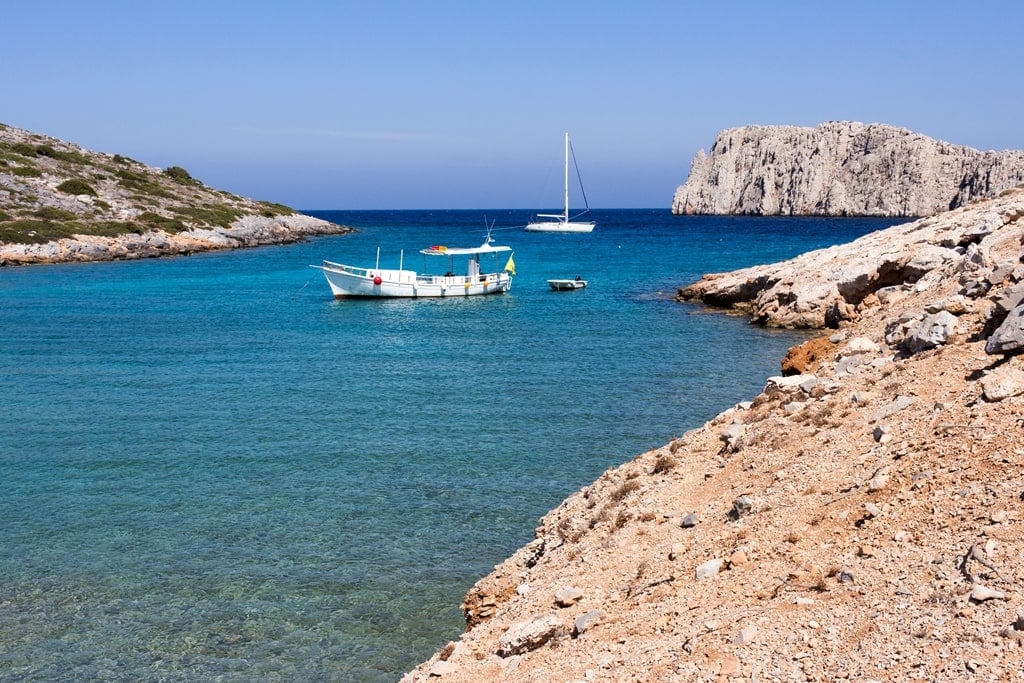
At Astypalea, you have the chance to treat yourself to a cruise. Departing from Pera Gialos or Maltezana, a luxury yacht or boat will take you on a small trip to the tiny islets of Koutsomitis and Kounoupes.
These two are Astypalea’s unique treasures, as they look completely different from the rest of the island. Kounoupes feels like you stepped into a desert double beach in the Caribbean, with white sand and gorgeous turquoise waters, and interesting rock formations.
After that, next on the cruise is the islet of Koutsomitis. Right next to it is another islet called Tigani, and between them, there is a narrow strip of see-through cyan waters that you must swim in. On either side of the sea, there are beautiful, pebbled beaches of bright white. Going to Koutsomitis and Kounoupes is an experience you shouldn’t miss out on.
Hit the beaches
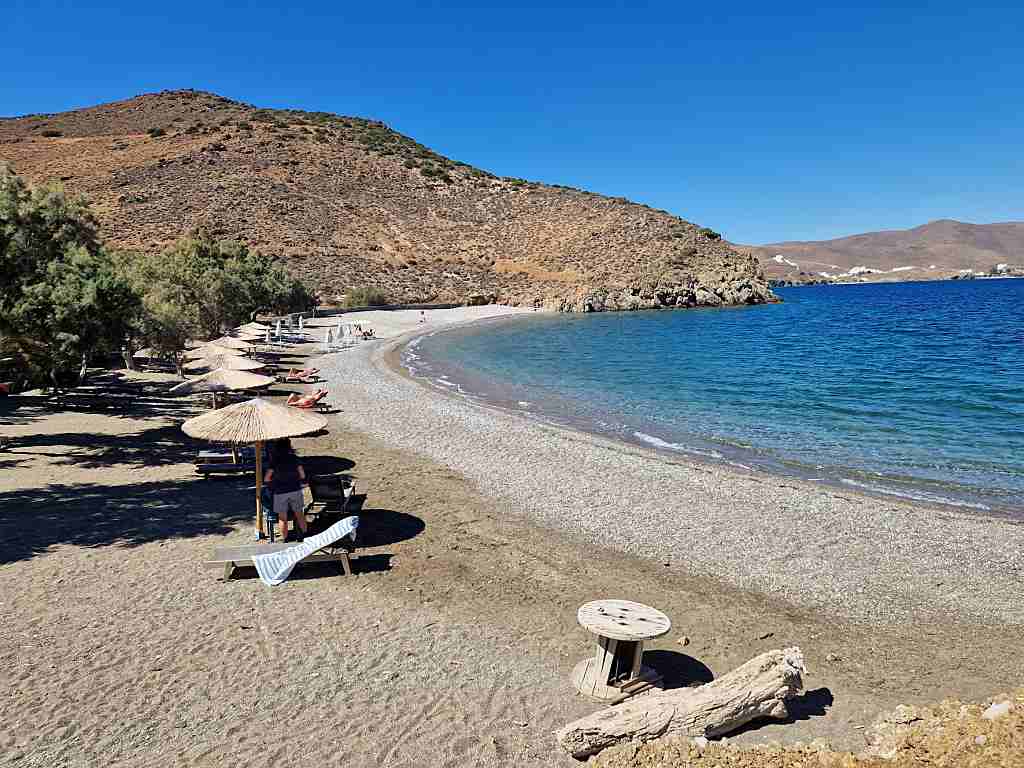
Astypalea is full of gorgeous beaches. Each one is lovelier than the last, and it’s a matter of taste which one becomes your favorite. That said, here are the top beaches you should visit and start your exploration:
Pera Gialos Beach: This is the lovely, sandy strip of the seaside by the old harbor, which is very popular with the locals and tourists. It’s right outside Chora, and you can reach it on foot. There is some organization and a lot of tavernas and cafés lining it.
Maltezana Beach: Protected by its natural bay, this sandy beach is gorgeous and perfect if you have a family, thanks to its soft fine sand and clear waters. There isn’t much organization, but you can find many services nearby.
Vatses Beach: this is a gorgeous secluded beach that you can reach by boat or a narrow dirt road by car. The waters are crystal clear and azure, and the pebbled seaside contrasts perfectly with it. Because this is a secluded beach, it is also nudist-friendly.
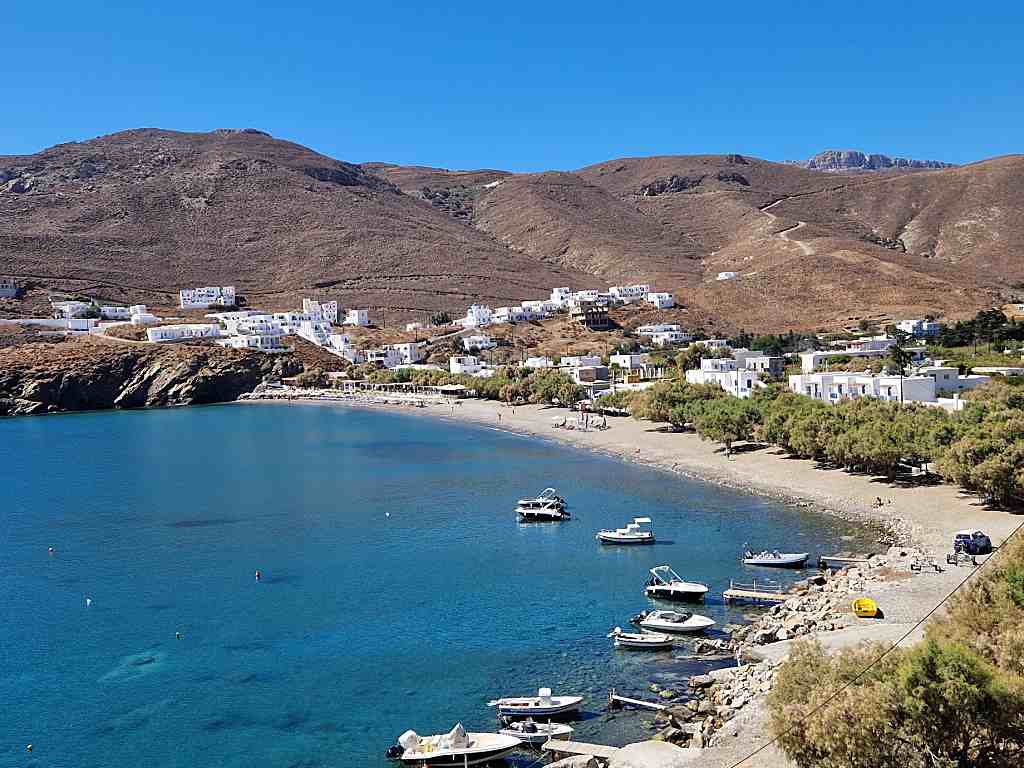
Vathi Beach: This lovely sandy beach is very secluded, so you will probably have a lot of privacy. You can reach it by boat or car as it is 21 km from Chora. Don’t forget to explore while you’re there!
Kaminakia beach: Kaminakia is a sandy beach with beautiful rocks jutting into the sea. It’s 8 km from Chora, and you can reach it via a dirt road. There is some organization, but it generally remains remote and quiet.
You might like: The best beaches in Astypalea.
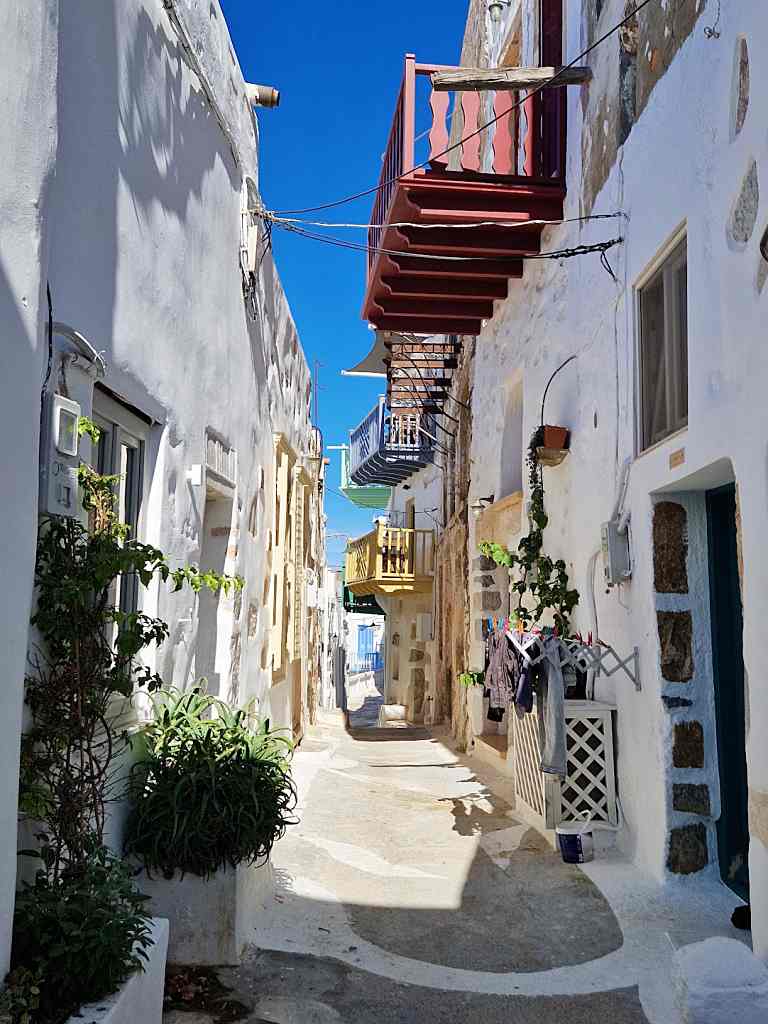
Sample the food
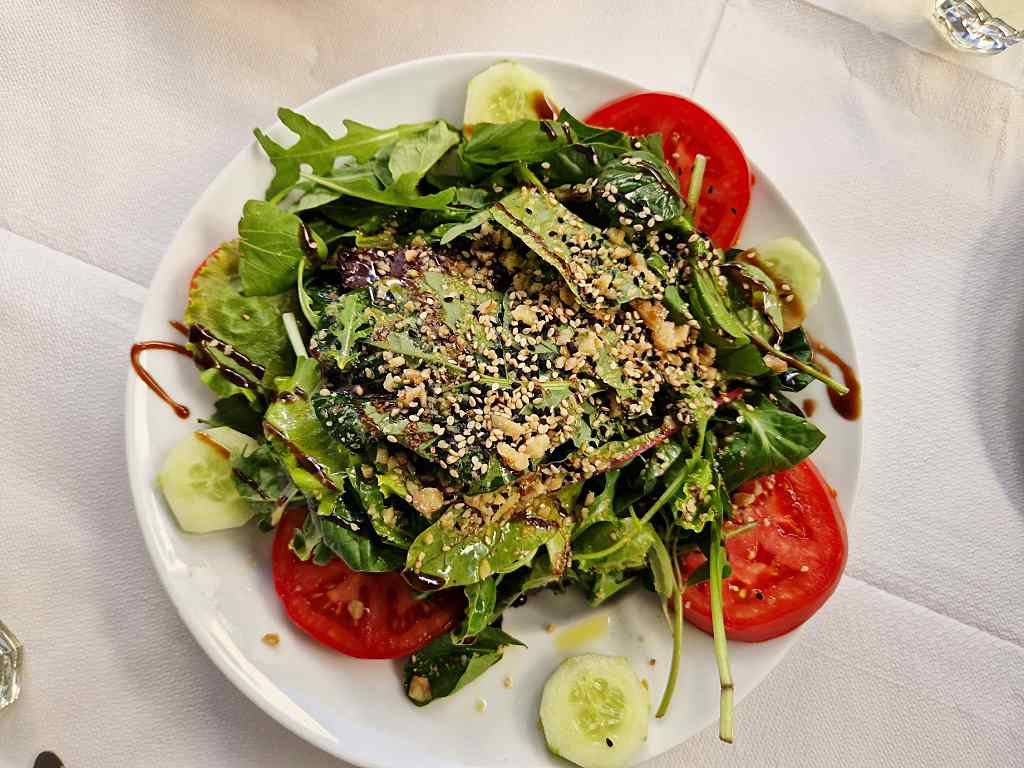
Though Astypalea is small, its cuisine is amazingly vast and rich. Thanks to its lush culture and fertile lands, Astypalean traditional cuisine has some unique elements you will find nowhere else. Make sure you sample the local products and dishes, particularly the following:
Saffron cookies: Some of the best quality saffron is harvested on the slopes of Astypalea, which is why the iconic cookie from the island is yellow! Kneaded with milk and butter, only with added spices, these cookies (called kitronokouloura, which means yellow cookie) are made during the Easter season to be consumed around the year and kept in special tin boxes.
Thyme rusks: These rusks are made based on olive oil and seasoned with thyme. They are fragrant and the perfect backdrop for tasting the various Astypalean cheeses.
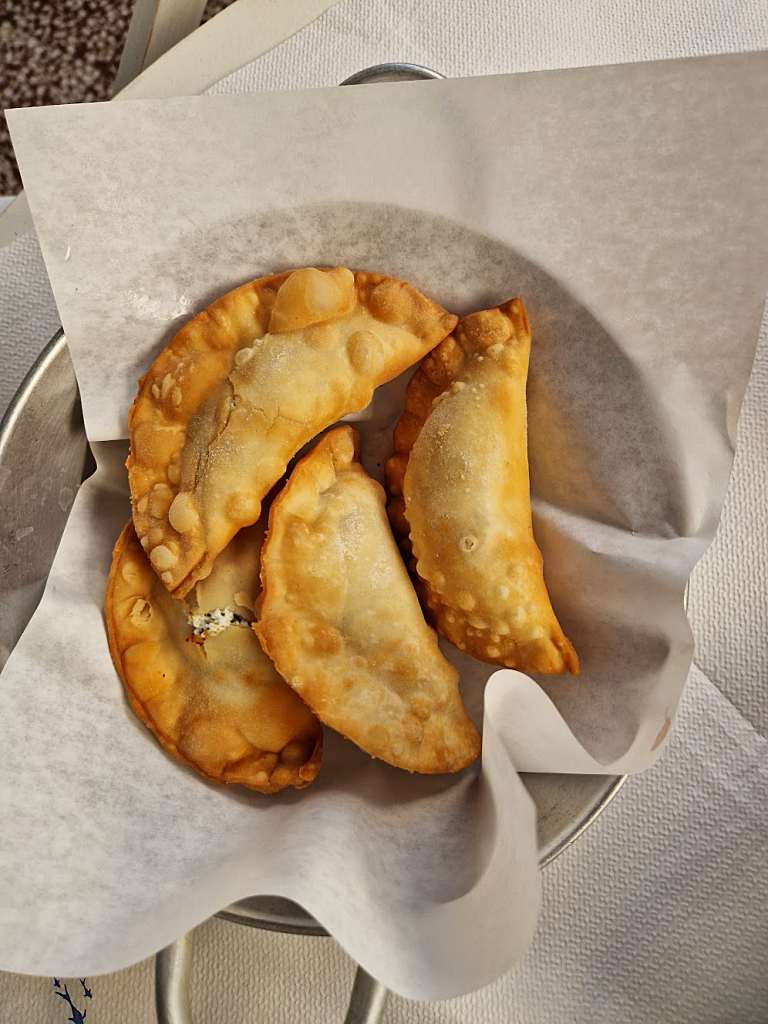
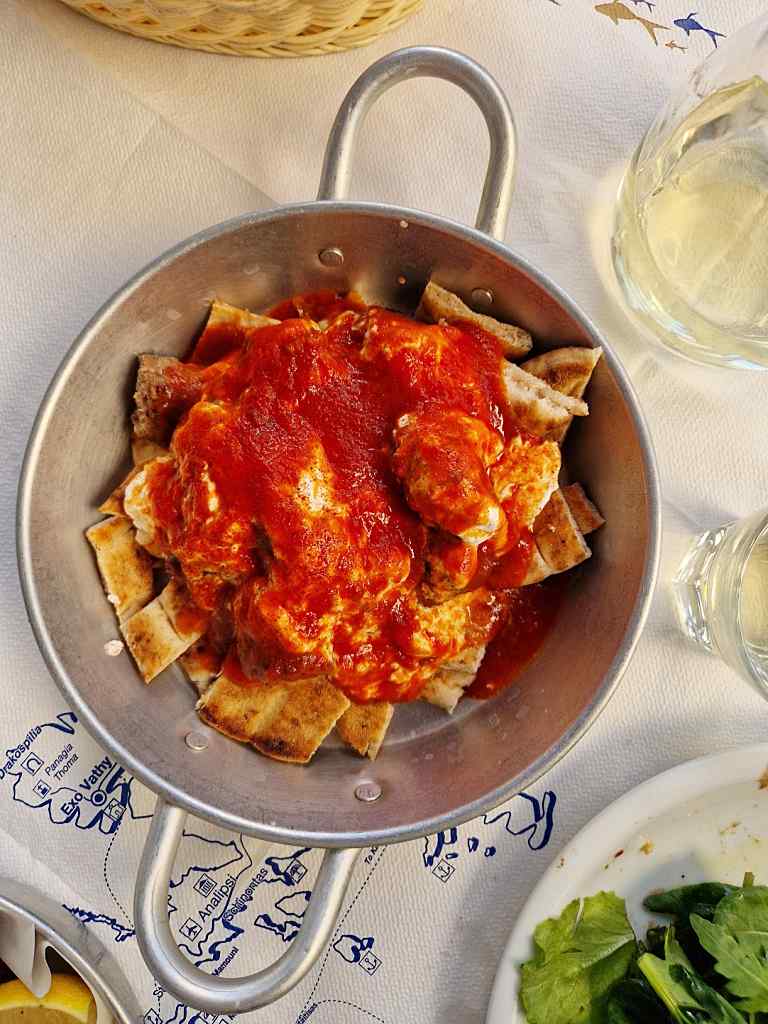
Pouggia Astypaleas: These deep-fried cheese pockets are synonymous with Astypalea and are considered one of Greece’s best traditional delicacies. The dough is made with just oil and flour, but the filling is where it’s at! The filling can be sweet or savory and made with soft cheese. For the sweet filling, mizithra is usually used with cinnamon, milk, and sugar.
For the savory filling, there is kopanisti (which is tangy and salty) and peppermint. The uniqueness lies in the balancing out of sweet and savory in both versions, in such a way that one is an accompaniment for your coffee while the other is for your wine or beer!
There are many other main course dishes, such as fish cooked in the oven with saffron, stuffed goat with rice and spices, octopus balls, and more. Each dish holds the taste of Astypalea and is a touch of its culture on your fork.
While you are on the island, make sure also to enjoy the local honey, cheeses, and dairy. Even the yogurt is unique, called ksialina. So, as you explore the island, make it a point also to explore the cuisine!

